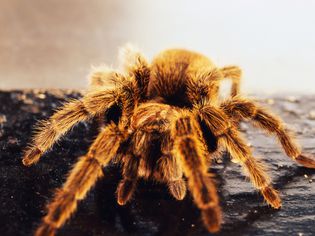How to Choose the Right Pet for Your Family: A Step-by-Step Approach
How to Choose the Right Pet for Your Family: A Step-by-Step Approach
Selecting a family pet requires strategic planning beyond fleeting excitement. Follow this evidence-based framework to ensure lifelong compatibility:
Step 1: Conduct a Family Readiness Audit
Lifestyle Scan: Track your family’s daily routine for 1 week. Note unpredictable schedules or frequent travel.
Allergy Testing: 18% of children develop pet allergies. Schedule clinical IgE tests before considering furry pets.
Budget Mapping: Beyond initial costs ($50-$2,000), project annual expenses:
Dogs: $1,200-$4,800
Cats: $800-$2,500
Small mammals: $300-$700
Space Assessment: Measure usable pet areas. Small apartments may better suit cats or guinea pigs (minimum 7.5 sq ft cage)
Step 2: Match Species to Family Dynamics
Decision Matrix:
| Family Profile | Recommended Pets | Avoid |
|---|---|---|
| Under-5 children | Fish, adult cats | Baby rodents, reptiles |
| Apartment dwellers | Rabbits, birds | Large-breed dogs |
| Frequent travelers | Automated aquariums | Puppies, kittens |
| Special needs family | Therapy-trained dogs | High-strung breeds |
Pro Tip: Reptiles pose salmonella risks for under-5s - CDC reports 74,000 annual cases linked to pets.
Step 3: Hands-On Trial Runs
Foster First: Partner with local rescues for 2-4 week trial adoptions
Volunteer: Commit 10 hours at shelters observing child-pet interactions
Borrow: Use platforms like “BorrowMyDoggy” for weekend test runs
Step 4: Source Responsibly
Adoption Checklist:
Verify USDA licensing for breeders
Demand veterinary exam records
Observe mother-offspring interaction
Confirm socialization exposure (critical 3-14 week window)
Red Flags:
Multiple litters on-site
Refusal of facility tours
No health guarantees
Step 5: Prepare Your Environment
Essential Pre-Arrival Setup:
Safety Zones: Baby gates, cat shelves, rodent-proofed rooms
Hazard Removal: Secure electrical cords (pets cause 750 U.S. house fires annually)
Supplies Kit:
Enzymatic cleaners
Interactive toys (e.g., Kong Classic)
Species-specific carriers
Step 6: Implement the 3-3-3 Integration Plan
3 Days: Quiet decompression in designated zone
3 Weeks: Gradual territory expansion with supervised family interaction
3 Months: Full routine establishment with obedience training
“Rushing introductions causes 68% of failed adoptions” - ASPCA Behavioral Specialists
Sustainable Success Strategies:
Assign age-appropriate chores (children 5+ can refill water bowls)
Schedule bi-annual “family councils” to assess pet satisfaction
Enroll in preventative care plans: Unexpected vet bills cause 23% of rehoming cases
The Last Word:
Choosing wisely prevents heartbreaking rehoming. Families completing this 6-step process report 89% higher 5-year retention rates. When matched intentionally, pets become resilience-building companions that teach responsibility and empathy.
RECOMMENDED NEWS

Do Dogs Get Bored? Signs and What You Can Do About It
IntroductionDogs, especially intelligent breeds, can suffer from boredom when their physic...

Affordable DIY Pet Grooming Tips for Cats and Dogs
IntroductionGrooming your cat and dog at home can be both rewarding and budget-friendly. R...

The Ultimate Kitten Care Guide: From Feeding to Playtime
IntroductionWelcoming a kitten into your home is a joyful experience, but it also carries ...

Training Your Pet: Effective Methods for Behavior Correction
Training Your Pet: Effective Methods for Behavior CorrectionAddressing unwanted pet behavi...

How to Choose the Right Pet for Your Family: A Step-by-Step Approach
How to Choose the Right Pet for Your Family: A Step-by-Step ApproachSelecting a family pet...

How to Care for a Pet Chilean Rose Tarantula
Chilean rose tarantulas are a popular pet tarantula species to keep. These spiders have b...
Comments on "How to Choose the Right Pet for Your Family: A Step-by-Step Approach" :